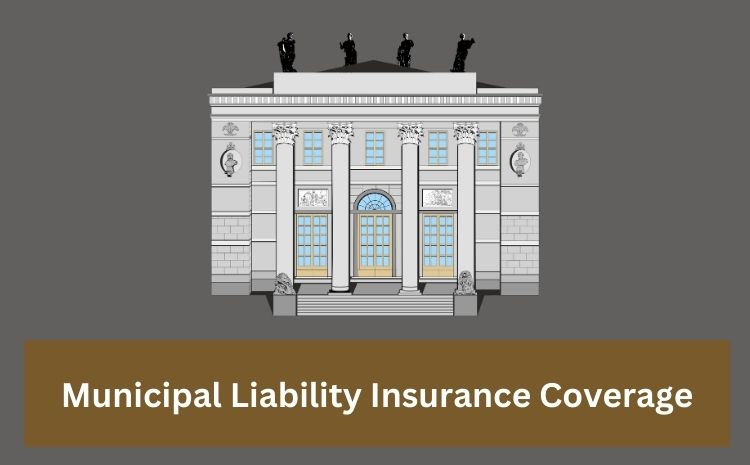Municipal Liability Insurance Coverage: Municipalities serve communities through vital services yet face inherent legal exposures in daily operations.
Liability insurance specifically addresses obligations to taxpayers by protecting against costly lawsuits that could threaten public funds or service continuity.
Whether maintaining infrastructure, sponsoring events or regulating development, municipalities encounter risks professional policies transfer.
This comprehensive guide explores rationales for coverage, core policy components addressing municipal exposures, best practices complementing protection and strategic considerations optimizing coverage annually.
Why is Municipal Liability Insurance Important?
Municipal liability policies satisfy unique responsibilities to residents through prudent risk management by:
- Infrastructure Maintenance – Protecting against claims over sidewalk/road disrepair or utility disruptions.
- Employee Safety – Workers compensation covers injuries while liability defends third party claims from employees.
- Public Services – Programming like recreational facilities, public works introduce participant risks.
- Regulatory Functions – Challenges to zoning/development decisions require representation resources.
- Continuity of Operations – Costly claims could cripple budgets diverting funds from core services.
- Reputational Protection – Insurance restores public trust if unexpected incidents materialize.
Responsible leadership secures affordable long-term protection aligning with community service priorities.
Core Components of Municipal Liability Coverage
Most liability policies maintain these elements addressing common municipal legal exposures:
- General/Automotive Liability – Bodily injury, property damage from owned vehicles, premises, or operations.
- Public Officials Errors & Omissions – Defense for improper acts, misfeasance, or negligence in duties by officials.
- Law Enforcement Liability – Misconduct, civil rights violations, pursuit/jail claims included.
- Employee Benefits Liability – Fiduciary responsibility protection over public pension/benefit plans.
- Sexual Misconduct or Abuse Coverage – Allegations involving employees, volunteers or operations.
- Employment Practices Liability – Discrimination, harassment, wrongful termination suits.
Comprehensive coverage funds unexpected claims to benefit continued community services.
Municipal Risks Requiring Liability Coverage
Due to scale and activities, certain exposures warrant responsive protection for municipalities:
- Infrastructure Failures – Accidents from deteriorating bridges, flooding due to drainage issues and more.
- Parks & Recreation – Sports injuries, property damage at outdoor venues from visitor negligence.
- Public Events – Festivals introduce premises liability, slips/falls, property damage exposures.
- Emergency Services – Vehicle collisions, fires/paramedic mishaps require additional auto/EMS policies.
- Development Regulation – Inverse condemnation claims over devalued properties due to zoning decisions.
- Employment Issues – Discrimination, harassment lawsuits from personnel require robust EPLI limits.
Policies answer for unpredictable losses impacting public liabilities.
Evaluating Adequate Coverage Limits
Determining suitable liability protection involves balanced considerations including:
- Budget Size – Communities’ greater resources may absorb higher, though less frequent claims.
- Infrastructure Value – Significant public facilities/lands necessitate limits commensurate with tangible assets.
- Services Provided – Certain public programming introduces higher inherent risks than others.
- Claims History – Prior losses suggest prudent initial limits while avoiding premium volatility.
Common minimum thresholds start at:
- $1 million per occurrence
- $3 million general aggregate
Larger municipalities purchase $5M+, while certain high-risk activities like sand/gravel operations, emergency response or major public projects warrant even higher customized solutions.
Municipal Risk Management Best Practices
Complementing responsive liability coverage, proactive strategies empower communities through oversight including:
- Infrastructure Inspections – Documenting maintenance to roadway signs, signals, sidewalks and more.
- Parks/Facility Audits – Identifying and alleviating premises hazards for recreational spaces.
–Regular Equipment Checks – Ensuring vehicles, tools and public safety gear proper working order.
–Training Programs – Stressing safe operations and providing continuing education per certifications.
–Record Keeping – Thoroughly logging all repairs, incidents and actions protects municipalities.
–Resident Education – Notifying community about risks using signage or public awareness campaigns.
Risk management and diligent record-keeping bolster already strong liability policy protections.
Policy Considerations for Distinct Exposures
Potential specialized coverage factors in activities like:
- Airports/Transit Systems – Add prominent public/auto exposures necessitating high autos limits.
- Utilities – Failure of water/power infrastructure opens significant third-party damage exposures.
- Landfills/Waste Services – Environmental impairment liability policies required handling trash/sludge.
- Economic Development – Errors covering misinformation impacting large business incentives/subsidies.
Partnering with experienced public entity specialists ensures comprehensive solutions customized for any distinct local risks or assets requiring supplemental protection.
Managing Coverage Responsibly Over Time
As exposures shift regularly for dynamic municipalities, prudent practices include:
- Comparing renewal terms – Ensuring comprehensive coverage remains competitively priced.
- Reviewing self-insured retentions – Adjusting deductibles if budgets fluctuate or loss trends emerge.
- Monitoring service expansions – Engaging underwriters for growth impacts and tailored responses.
- Tracking new liability laws – Amendments may expand risk necessitating policy adjustments.
- Benchmarking limits – Periodically recalibrate thresholds against inflation and industry standards.
- Documenting loss control – Citing diligence secures continued eligibility and competitive premiums.
Proactive oversight maintains optimal long-term community protection within fiscal restraints.
Conclusion on Municipal Liability Insurance Coverage
Municipalities bear weighty responsibilities through services directly impacting public safety and welfare.
Prudent leadership secures liability policies crafted by specialists experienced with the exposures unique to local government operations.
Complementary best practices demonstrate diligence while policies provide indispensable reassurance against unforeseen yet inevitable claims arising.
With guidance, communities thoughtfully customize evolving coverage addressing changing needs to remain focused solely on constituent priorities through sustainability.
Comprehensive liability solutions prove a hallmark of commitment to continued excellent public services.
